#Virginia schools renamed
Explore tagged Tumblr posts
Text
Feeling Snarky ... Gee, I Wonder Why?
I think tonight’s a good night for some snarky snippets … got some steam building up that needs an outlet! One step forward … oops, no wait, turn around and go back. Four years ago in 2020, largely in response to the murder of George Floyd, the BlackLivesMatter movement, and the awareness that racism is still very much alive and well, Shenandoah County in Virginia renamed two of the schools in…

View On WordPress
#Barron Trump#Cassidy Hutchinson#Republican National Convention#Steve Bannon#Virginia schools renamed
0 notes
Text
Dean Obeidallah at The Dean's Report:
The push and pull between white supremacist rule and a multi-cultural United States is nothing new. But on Friday we saw a first in our nation’s history: A school board voted to restore the name of three Confederate generals to their public schools. That’s right, in 2024, the right is naming schools after people who fought and killed to preserve both chattel slavery and white supremacy. This is just the latest salvo in the GOP’s campaign to move America backwards to before the Civil Rights movement.
This jaw-dropping event happened on Friday, when the Shenandoah County School Board in Virginia voted 5-1 to reinstate the names Stonewall Jackson High School and Ashby Lee Elementary School to honor Confederate Generals Thomas “Stonewall” Jackson, Robert E. Lee and Turner Ashby. This vote to celebrate the traitors who killed US soldiers in the hope of maintaining the barbarism known as chattel slavery was led by the conservative group Coalition for Better Schools. Now the school board will spend an estimated six figures in tax dollars to send a message that this area of Virginia is a place where white supremacy rules. This action is all part of the right’s response to the racial reckoning that was kicked off in the United States after the brutal murder of George Floyd in 2020 and the Black Lives Matter protests that followed. In fact, the names of these Virginia schools were changed in that very period. But this is not simply a “reinstatement” of Confederate names. Rather this is a manifestation of the white right’s desperate efforts to maintain control in the face of changing America. After all, this is exactly what white supremacists did in the past when they felt challenged.
As a reminder, the greatest number of Confederate statutes were erected in the early 1900’s spearheaded by United Daughters of the Confederacy as Jim Crow laws were being enacted across the South. These racist laws and the Confederate memorials were part of a scheme to both celebrate and preserve white supremacy. The next spike in Confederate monuments came from 1940’s to 1960’s. Why then nearly 100 years after the Civil War? Simple, these statutes were built in reaction to the Civil Rights movement to send a message that white power still ruled that area. It’s no coincidence that in 1956, Georgia redesigned its state flag to include the Confederate battle flag and in 1962, South Carolina placed the Confederate battle flag atop its capitol building.
When it comes to schools being named after traitors who took up arms against the United States of America to fight for the Confederacy, want to guess when the biggest wave of that occurred? Was it shortly after The Civil War? Nope, it was following the landmark US Supreme Court decision Brown v. Board of Education in 1954 which ruled that segregated public schools were unconstitutional. Between that 1954 court decision and 1970, our nation saw the largest spike in schools being after those who fought to defend slavery. In fact, the schools at issue in Virginia were opened in that time frame, with Stonewall Jackson high school opening in 1960. That’s right. The naming of these Virginia schools was part of the backlash to the Civil Rights movement and Brown v. Board of Education. The white officials in that area of Virginia at the time wanted to ensure that people knew white power still reigned supreme.
Dean Obeidallah gets to the point as usual. The renaming of a pair of schools in Shenandoah County, Virginia by reinstating the name of the pre-2020 names of the schools named after three treasonous Confederates (Thomas “Stonewall” Jackson, Robert E. Lee, and Turner Ashby) is a middle finger to common sense and a win for white supremacist values.
#Dean Obeidallah#Schools#Confederacy#Shenandoah County School Board#School Boards#Virginia#White Supremacy#Coalition for Better Schools#Slavery#Brown v. Board of Education#Civil Rights Movement
43 notes
·
View notes
Text

Today we look at the pivotal role played by Evelyn Thomas Butts: activist, agitator, and (eventually) elected official. Born in 1924 Norfolk, Virginia, Evelyn Thomas was orphaned at a young age and raised mostly by her politically-conscious aunt. Evelyn eventually married a Charles Herbert Butts, who served in WWII but was injured. To offset his disability (no wartime benefits for Black veterans at this point, remember), the couple --and their eventual three daughters-- took in boarders, and Evelyn also worked as a seamstress. Inspired by her aunt's careful teaching about staying closely involved in local politics, Evelyn became a member of the Oakwood (Norfolk) neighborhood civic league and eventually was elevated to its president. She used this platform to speak out against segregated schools, segregated stadium seating at sporting events, and even organized a picketing of a local supermarket that refused to hire Black employees. She also co-founded the Rosemont Middle School during this period, and organized voting drives.
It was in the light of her voting drive efforts, that the largest elephant in the room at the time was clearly the Poll Tax --a significant (and insulting) barrier to voting rights; not just in Virginia, but in most of the South. Poll taxes, while technically having been in existence in varying forms since Colonial days, had in post-Reconstruction times, evolved into blatant discriminatory fees. While on paper these required payments made no mention of race or other category, in practice they were broadly designed to disenfranchise poor and working class voters, but most specifically the Black population. Added administrative "fine print" (such as vaguely-worded requirements to pay the fee on a different, specified date prior to an election and then being required to bring that receipt to the polling place), as well as weasel-worded grandfather clauses and impossibly difficult literacy exams, all conspired to ensure that few Blacks would be able to cast ballots.
In November of 1963, Butts filed suit in the Eastern Judicial District of Virginia in an attempt to have the poll tax declared unconstitutional. This attempt was dismissed, but, undeterred, Butts joined with Annie E. Harper and several other women from Fairfax County, Virginia, to consolidate their cases together, along a broader premise. The 4th U.S. Circuit Court of Appeals in Richmond heard arguments in 1964 but ultimately ruled the tax constitutional. Butts and Harper and their allies promptly took their appeal to the U.S. Supreme Court, represented by then-solicitor Thurgood Marshall.
On March 24, 1966, the Supreme Court ruled 6-3 that poll taxes were in fact unconstitutional, violating the Equal Protection Clause of the Fourteenth Amendment (see Harper v. Virginia State Board of Elections).
Evelyn's activism didn't stop there; in 1975 she was appointed as the first black woman commissioner to the Norfolk Redevelopment and Housing Authority. She remained an active member of the NAACP well into the 1980's, and also organized Concerned Citizens of Norfolk, a local initiative designed to encourage more African-Americans to run for office. A street in Norfolk was renamed in her honor in 1995, and a historical marker was erected in 2020.
#black lives matter#black history#civil rights#voting rights#local politics#poll tax#evelyn thomas butts#norfolk#virginia#equal protection clause#14th amendment#teachtruth#dothework
8 notes
·
View notes
Text
self indulgent post with visuals for my Young Royals future fic
I took a walk all over the city today, something I haven’t done in a while. With all the things going on, it was nice to move my body and get out and about. It was sort of dreary and drizzly and cool, but since it’s been so hot these past few days, it was a nice change.
As I walked through one part of the city, it occurred to me that part of my path intersected with my fanfic plans. One of my future headcanons is that both August and Nils go to Georgetown for university. I realized I was walking on a path that was probably one of August’s jogging routes. I decided I’d take some photos and post them here with some captions, in case anyone finds it interesting.
This is so far from show-related I am not tagging it or making it rebloggable. But I hope you enjoy all the same!
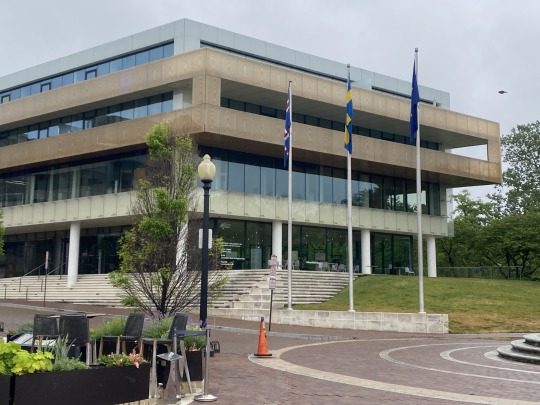
This is the House of Sweden, which also houses the Swedish and Icelandic embassies. They run a lot of cool cultural exhibitions, and sometimes there are rooftop concerts and Christmas markets and things. I believe some of the actual Swedish royal kids did summer internships here, so this is where I imagine August doing his own summer internship. He also has a colleague working for the Icelandic embassy who becomes Nils’s boyfriend.

Just around the corner from the embassy is a boating center. A lot of the private schools in the area row here. I imagine August would find some familiarity in a sight like this!
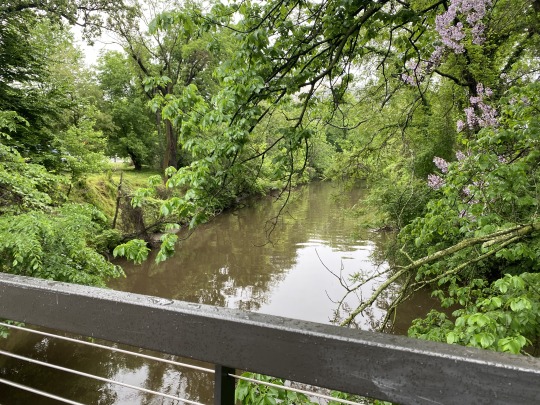
Speaking of being around water… here’s a cool shot of the C & O canal. Caution: there are Canada Geese lurking in this area. I will throw a bone to all the August haters out there and headcanon that one morning while jogging he gets chased by Canada Geese.
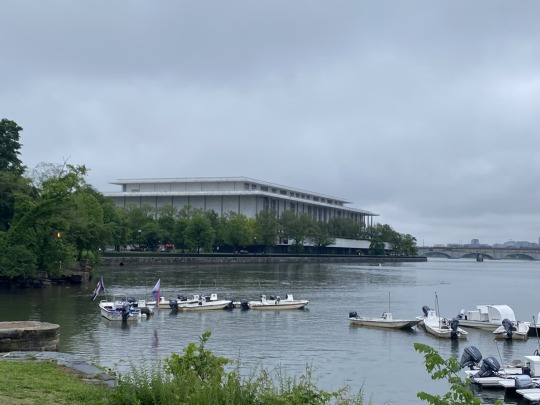
Here’s a few of the Kennedy Center on the Potomac. If Wille and Simon ever came to DC, they could see a play, opera, or concert here.
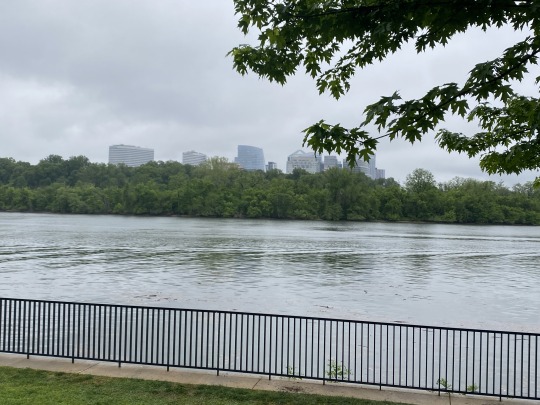
Look at Virginia across the Potomac! We love our siblings in Virginia. (It’s prettier at night.)
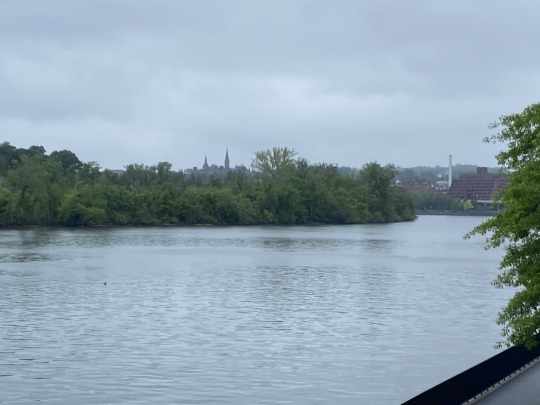
At this point if August glances back over his shoulder, he can see the towers of Georgetown in the distance. He’s a long way from campus, but he probably won’t regret running that far. Probably.
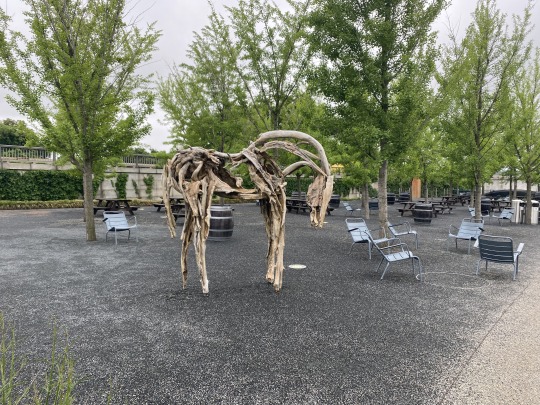
Eventually he’d get to a walkway that takes him to a sculpture garden attached to the Kennedy Center. (Do you think he’d look at this horse and think about Sara? Absolutely.)
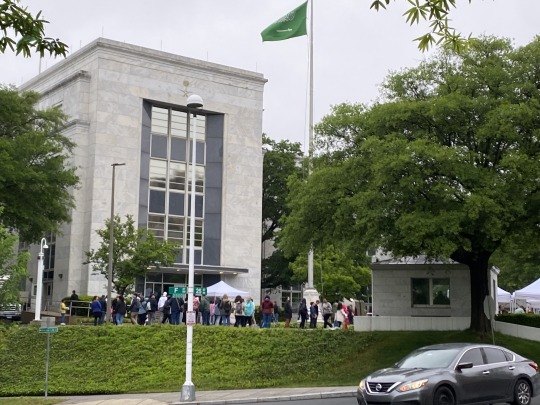
On his way back up the hill, August would catch sight of Saudi Arabia’s embassy. He probably would have also seen Thailand and Ukraine’s embassies during his morning run, but I didn’t get a picture of those because they’re earlier on his route and I didn’t have the idea in my head to take photos yet. (Interesting fact: the DC government renamed the street in front of the Saudi Arabian embassy Jamal Khashoggi Way.)
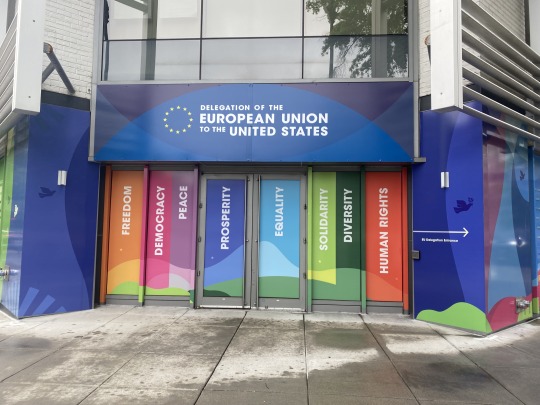
Final image! This is a little bit off August’s jogging path, but it’s the EU Delegation Building. Currently they’re advertising the EU Open House, where all the EU embassies open their doors to the public and offer free food and swag (and basically aggressively promote their countries so you can think about going on vacation there.) Since August is an intern at the House of Sweden, he would probably have to shake so many hands that day and do so much PR as part of his job. Or he would have to hand out so much swag. (When I volunteered at the Finnish embassy I had to hand out food samples and came home smelling like rye bread and herring.)
I hope you enjoyed my little tour of this tiny part of DC! It was good to be out and about.
9 notes
·
View notes
Text
Guys I'm fucking crying I need help. I have always said the mandela effect is stupid but I am experiencing it right now and I'm losing my mind.
I don't remember the capital of South Carolina being Columbia. Now, I have never been anywhere near South Carolina, so I know that doesn't seem weird, but keep in mind that I have been a geography nerd forever and currently work for a travel company. I used to read maps for fun.
I got 100% on the state capitals quiz in fifth grade and have a physical trophy to prove it, so I definitely knew this at some point. I used to take geography quizzes on sporcle. I have written about South Carolina for work. And yet I have never heard of Columbia, and it's giving me brain zaps.
I don't know what I thought the capital was, but definitely not Columbia. I thought it might be Charleston but that doesn't sound quite right and there's a Charleston that is the capital of West Virginia, so that's probably why I thought that.
"Columbia, South Carolina" doesn't sound right to me like all the other capitals do. I'm weirded out enough that I set google to the years 2002-2010 to see if it was something else when I was in school learning capitals, and sure enough, they all say Columbia. An hour ago I would have bet $10,000 that this was not the capital.
I know the logical explanation of "you're just fucking stupid" is way more likely than "something weird is afoot" but am I actually insane for real??? I checked all the other state capitals and they all look familiar. Just this one seems so wildly out of place to me that I thought for sure they had changed it recently or renamed the city or something.
Someone help me. Why is this killing me. Is there some explanation to why I wouldn't know this? Does anyone else remember it being something else?? Do I need to quit my job!?!? Am I simply fucking stupid???
4 notes
·
View notes
Text

Nannie Helen Burroughs (May 2, 1879 - May 20, 1961) was born in Orange, Virginia to John and Jennie Burroughs. She attended school in DC and moved to Kentucky where she attended Eckstein-Norton University and received an honorary MA.
She sought a teaching position in DC, but she did not receive it, she moved to Philadelphia and became associate editor of The Christian Banner, a Baptist newspaper. She returned to DC where, despite receiving a high rating on the civil service exam, she was refused a position in the public school system. She took a series of temporary jobs including office building janitor and bookkeeper for a small manufacturing firm, hoping to become a teacher in DC. She accepted a position in Louisville as secretary of the Foreign Mission Board of the National Baptist Convention.
She began planning the National Trade and Professional School for Women and Girls in DC. The school opened in 1909 with her as its first president. She adopted the motto “We specialize in the wholly impossible” for the school, which taught courses at the high school and junior college levels. She led her small faculty in training students through a curriculum that emphasized both vocational and professional skills. Her students were to become self-sufficient wage earners and “expert homemakers.”
She believed that industrial and classical education were compatible. She became an early advocate of African American history, requiring each of her students to pass that course before graduation. She was a demanding principal.
She never married. She devoted her life to the National Trade and Professional School for Women and Girls and remained its principal until her death. Three years later the institution she founded was renamed the Nannie Burroughs School. #africanhistory365 #africanexcellence #deltasigmatheta
1 note
·
View note
Text

The portraits of Sojourner Truth, Harriet Tubman, and Frederick Douglass hang on the walls of the Smithsonian Institution’s National Museum of African American History and Culture on September 24, 2016, in Washington, DC
In August 1619, the first ship with “20 and odd” enslaved Africans arrived on the shores of Virginia. Four hundred years later, we look back at this moment as the start of an enduring relationship between the founding of the United States and the unconscionable exploitation of the enslaved.
In a sweeping project published by the New York Times Magazine in August 2019 exploring the legacy of slavery, Nikole Hannah-Jones wrote, “[The enslaved] and their descendants transformed the lands to which they’d been brought into some of the most successful colonies in the British Empire. ... But it would be historically inaccurate to reduce the contributions of black people to the vast material wealth created by our bondage. Black Americans have also been, and continue to be, foundational to the idea of American freedom.”
Yet centuries later, the lasting impact of slavery continues to be minimized and myths continue to flourish. For instance, there’s the erasure of the many slave revolts and rebellions that happened throughout the nation, perpetuating the lie that the enslaved were docile or satisfied with their conditions. There’s also the persistent idea that black labor exploitation is over, when mass incarceration still keeps millions of black Americans behind bars and often working for “wages” that amount to less than $1 an hour. Then there’s the idea that our understanding of slavery is accurate based on what we learned in history textbooks, when in reality, misinformation continues to be taught in our public schools about slavery’s legacy.
To unpack what often gets mistold or misunderstood, we asked five historians to debunk the biggest myths about slavery. Here’s what they said, in their own words.
1) The myth that slaves never rebelled
Miseducation surrounding slavery in the US has led to an elaborate mythology of half truths and missing information. One key piece of missing history concerns slave revolts: Few history books or popular media portrayals of the trans-Atlantic slave trade discuss the many slave rebellions that occurred throughout America’s early history.
C.L.R. James’s A History of Pan African Revolt describes many small rebellions such as the Stono Plantation insurgence of September 1739 in the South Carolina colony, where a small group of enslaved Africans first killed two guards. Others joined them as they moved to nearby plantations, setting them afire and killing about two dozen enslavers, especially violent overseers. Nat Turner’s August 1831 uprising in Southampton, Virginia, where some 55 to 65 enslavers were killed and their plantations burned, serves as another example.
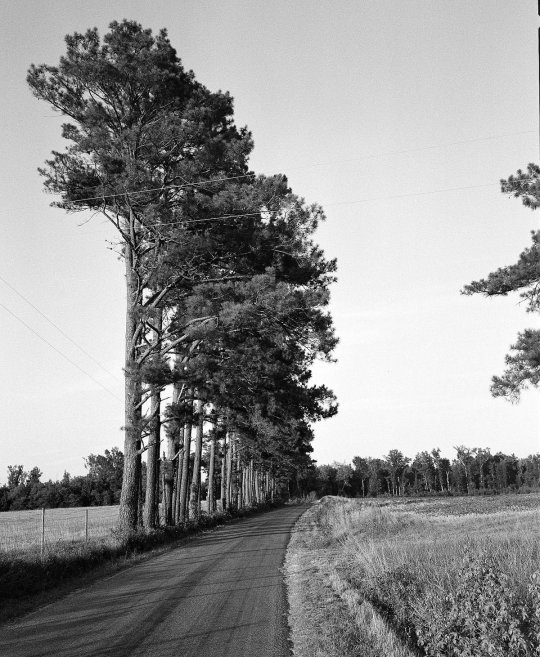
A country road follows the trail of Nat Turner’s 1831 slave rebellion in rural southeastern Virginia, June 5, 2010. On either side, farms were burned and slavers murdered as Nat Turner and his followers marched toward the town of Jerusalem, now renamed Courtland. Andrew Lichtenstein/Corbis via Getty Images
Enslaved Africans resisted and rebelled against individual slave holders and the system of slavery as a whole. Some slipped away secretly to learn to read. Many simply escaped. Others joined the abolitionist movements, wrote books, and gave lectures to the public about their experiences in captivity. And others led or participated in open combat against their captors.
Omitting or minimizing these stories of rebellion helps hide the violent and traumatic experiences enslaved Africans endured at the hands of enslavers, which prompted such revolts. If we are unaware of resistance, it is easier for us to believe the enslaved were happy, docile, or that their conditions were not inhumane. It then becomes easier to dismiss economic and epigenetic legacies of the transatlantic slave system.
Dale Allender is an associate professor at California State University, Sacramento.
2) The myth that house slaves had it better than field slaves
While physical labor in the fields was excruciating for the enslaved — clearing land, planting, and harvesting that often destroyed their bodies — that didn’t negate the physical and emotional violence enslaved women, and sometimes men and children, suffered at the hands of enslavers in their homes.
In fact, rape of black women by white enslavers was so prevalent that a 2016 study revealed 16.7 percent of African Americans’ ancestors can be traced back to Europe. One of the study’s authors concludes that the first African Americans to leave the South were those genetically related to the men who raped their mothers, grandmothers, and/or great-grandmothers. These were the enslaved African Americans within the closest proximity to and who spent the longest durations with white men: the ones who toiled in the houses of slave owners.

An unidentified woman poses with a book in her hands, circa 1850. The original caption identifies her only as a “freed slave.” Transcendental Graphics/Getty Images
A 2015 study determined that 50 percent of rape survivors develop PTSD. It is hard to imagine that enslaved and freedom-seeking African American survivors of rape — female, male, old, young, no matter their physical or mental abilities — did not experience further anxiety, fear, and shame associated with a condition they could not control in a situation out of control. Those African Americans with the most European ancestry, those tormented mentally, physically, emotionally, and genetically in the house, knew they had to get out. In fact, they fled the farthest — Southern whites are more closely related to blacks now living in the North than the South.
Jason Allen is a public historian and dialogue facilitator working at nonprofits, hospitals, and businesses in New York, New Jersey, and Philadelphia.
3) The myth that abolition was the end of racism
A common myth about American slavery is that when it ended, white supremacy or racism in America also ended.
Recently, Senate Majority Leader Mitch McConnell offered a familiar variant of this myth when he said he opposed reparations “for something that happened 150 years ago.” To the Kentucky Republican, a descendant of enslavers, slavery simply was, and then it just wasn’t, as though the battlefield had leveled the playing field when it came to race.
But the truth is that long after the Civil War, white Americans continue to carry the same set of white supremacist beliefs that governed their thoughts and actions during slavery and into the post-emancipation era.
In the South, especially, whites retained an enslaver’s mentality. They embraced sharecropping and convict leasing to control black labor in late 19th century, enacted Jim Crow laws to regulate black behavior in the early 20th century, and use racial terror to police the color line to this day.
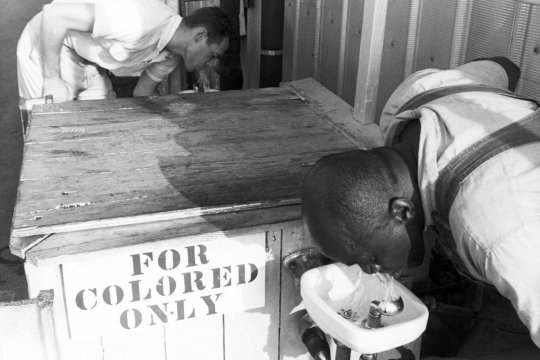
In this undated photo, two men use segregated drinking fountains in the American South. Getty Images
In the North, whites also rejected racial equality. After emancipation, they refused to make abandoned and confiscated land available to freedmen because they believed that African Americans would not work without white supervision. And when African Americans began fleeing Dixie during the Great Migration, white Northerners instituted their own brand of Jim Crow, segregating neighborhoods and refusing to hire black workers on a nondiscriminatory basis.
Slavery’s legacy is white supremacy. The ideology, which rationalized bondage for 250 years, has justified the discriminatory treatment of African Americans for the 150 years since the war ended. The belief that black people are less than white people has made segregated schools acceptable, mass incarceration possible, and police violence permissible.
This makes the myth that slavery had no lasting impact extremely consequential — denying the persistence and existence of white supremacy obscures the root causes of the problems that continue to plague African Americans. As a result, policymakers fixate on fixing black people instead of trying to undo the discriminatory systems and structures that have resulted in separate and unequal education, voter suppression, health disparities, and a wealth gap.
Something did “happen” 150 years ago: Slavery ended. But the institution’s influence on American racism and its continued impact on African Americans is still felt today.
Hasan Kwame Jeffries is an associate professor at Ohio State University.
4) The myth that history class taught us everything we needed to know about slavery
Many of us first learned about slavery in our middle or high school history classes, but some of us learned much earlier — in elementary school, through children’s books, or even Black History Month curriculum and programs. Unfortunately, we don’t always learn the entire story.
Most of us only learned partial truths about slavery in the United States. After the Civil War and Reconstruction, many in the North and South wanted to put an end to continuing tensions. But this wasn’t done just through the Compromise of 1877, when the federal government pulled the last troops out of the South; it was also done by suppressing the rights of black Americans and elevating the so-called “Lost Cause” of the enslavers.

The Tennessee-based group “New Confederate State of America” held a protest in support of retaining a statue of Confederate Gen. Robert E. Lee located on Monument Avenue in Richmond, Virginia, September 16, 2017. Win McNamee/Getty Images
The Lost Cause is a distorted version of Civil War history. In the decades after the war, a number of Southern historians began to write that slaveholders were noble and had the right to secede from the Union when the North wished to interfere with their way of life. Due to efforts by a group of Southern socialites known as the United Daughters of the Confederacy, Lost Cause ideology influenced history textbooks as well as books for children and adults. The accomplishments of black Americans involved in the abolition movement, such as Frances Ellen Watkins Harper, Maria W. Stewart, Henry Highland Garnet, and William Still, were downplayed. Union generals like Ulysses S. Grant were denigrated, as were anti-racist whites from John Brown to William Lloyd Garrison. Generations later, there are still many people around the country who believe the Civil War was about states’ rights and that slaves who had good masters were treated well.
Even an accurate historical curriculum emphasizes progress, triumph, and optimism for the country as a whole, without taking into account how slavery continues to affect black Americans and influence present-day domestic policy from urban planning to health care. It does not emphasize that 12 of the first 18 presidents were enslavers, that enslaved Africans from particular cultures were prized for their skills from rice cultivation to metallurgy, and that enslaved people used every tool at their disposal to resist bondage and seek freedom. From slavery to Jim Crow to civil rights to the first black president, the black American story is forced into the story of the unassailable American dream — even when the truth is more complicated.
Given what we learn about slavery, when we learn it, and how, it is clear that everyone still has much more to learn. Teaching Tolerance and Teaching for Change are two organizations that have been wrestling with how we introduce this topic to our young. And what they’re learning is that the way forward is to unlearn.
Ebony Elizabeth Thomas is an associate professor at the University of Pennsylvania.
5) The myth that slavery doesn’t exist today
One of the greatest myths about slavery is that it ended. In fact, it evolved into its modern form: mass incarceration.
The United States has the highest prison population in the world. More than 2.2 million Americans are incarcerated; 4.5 million are on probation or parole. African Americans make up roughly 13 percent of the general population. But black men, women, and youth have outsize representation in the criminal justice system, where they make up 34 percent of the 6.8 million people who are under its control. Their labor is used to produce goods and services for businesses that profit from prison labor.

Prisoners at the Ferguson Unit, a large prison along the Trinity River in Texas, actively work the farm the prison runs, which includes planting and harvesting an annual cotton crop, 1997. The prison is located on a former cotton slave plantation. Andrew Lichtenstein/Corbis via Getty Images
For those of us who study the early history of mass incarceration in America, these statistics are not surprising. From the late 1860s through the 1920s, over 90 percent of the prison and jail populations of the South were black. Thousands of incarcerated men, women, and children were hired out by the state to private factories and farms for a fee. From sunup to sundown, they worked under the watchful eye of brutal “whipping bosses” who flogged, mauled, and murdered them. They earned nothing for their toil. Today, labor exploitation, the denial of human dignity and the right to citizenship, family separation, and violent punishment define our criminal justice system in ways that mirror slavery.
Hundreds of thousands of incarcerated people work. According to a 2017 report published by the Prison Policy Initiative, “the average of the minimum daily wages paid to incarcerated workers for non-industry prison jobs is now 86 cents.” Those assigned to work for state-owned businesses (correctional industries) earn between 33 cents and $1.41 per hour. In 2018, incarcerated Americans held a nationwide strike to end “prison slavery.” In a list of demands, striking individuals called for “all persons imprisoned in any place of detention under United States jurisdiction” to be “paid the prevailing wage in their state or territory for their labor.”
This is a year to remember slavery’s origins. It is also an opportunity to critique its legacies. Let’s not get so caught up in our efforts to commemorate slavery’s beginning that we fail to advocate for its end.
Talitha LeFlouria is the Lisa Smith Discovery Associate Professor at the University of Virginia.
Correction: An earlier version misstated the range of presidents who were enslavers. It was 12 of the first 18 presidents, not 12 of the first 16.
#5 Things People Still Get Wrong About Slavery#american racism#slavery of Black people in america#white supremacy#systemic racism#white lies about american enslavement of Black people#Black LIves Matter#White lies matter#white hate#homegrown terrorism#white lies#13th amendment#jim crow#jim crow laws#reconstruction#slavery exists in america today
2 notes
·
View notes
Text
In the United States, by the 1960s, desegregation was legally mandatory for all schools. Instead of complying with the new federal law, Virginia shut down all of its public schools for nearly a decade to prevent it. My middle school was named after the Senator who spearheaded the shutdown until 2015, when they renamed it after years of people complaining.
Free public pools were a thing for years and years, and they were all closed down by the 1960s to prevent black people from using them.
Even today, you have politicians desperately trying to shut down public education and other resources rather than allow white children and black children to exist near each other. Racists and white supremacists do not care about improving their own quality of life, literally the only metric they care about is still being better off than minorities. They will destroy something from everyone to stop other people they don't like from playing with it, like a misbehaving toddler.

THIS RIGHT HERE
12K notes
·
View notes
Text
Top International MBA Colleges in Bangalore
Bangalore, often referred to as the "Silicon Valley of India," is not only the country's technology hub but also a prominent destination for higher education. Its cosmopolitan culture, thriving corporate sector, and global exposure make it an ideal city for pursuing an MBA. With a plethora of internationally acclaimed MBA colleges, Bangalore attracts students from across the globe. Here is a look at some of the top international MBA colleges in Bangalore.

1. Indian Institute of Management Bangalore (IIMB)
Ranked among the best business schools in India and globally, IIM Bangalore offers a wide range of management programs, including its flagship Post Graduate Program in Management (PGP). With a focus on research, innovation, and industry collaboration, IIMB provides students with unparalleled exposure to global business practices. Its extensive alumni network and partnerships with international universities further enhance its reputation.
2. Alliance University
Alliance School of Business, under Alliance University, is renowned for its international collaborations with universities in the USA, UK, and Europe. The Global MBA program offered by the university allows students to gain exposure to diverse business environments. The curriculum emphasizes experiential learning, with case studies, internships, and live projects playing a significant role.
3. Symbiosis Institute of Business Management (SIBM), Bangalore
A constituent of the Symbiosis International University, SIBM Bangalore has carved a niche for itself in management education. Its rigorous academic structure, coupled with international student exchange programs, ensures that students gain a global perspective. The institute has strong ties with multinational corporations, enabling excellent placement opportunities.
4. Xavier Institute of Management and Entrepreneurship (XIME)
XIME Bangalore is celebrated for its focus on entrepreneurship and innovation. The institute offers a robust PGDM program with an international dimension, thanks to its partnerships with business schools abroad. Regular guest lectures, international study tours, and industry interactions prepare students for global challenges.
5. Christ University, Bangalore
The Institute of Management at Christ University is well-known for its MBA programs with an international focus. The university’s collaborations with institutions like Virginia Commonwealth University (USA) and Sheffield Hallam University (UK) offer students opportunities for global learning. The diverse student body and industry-oriented curriculum make Christ University a popular choice.
6. International Institute of Business Studies (IIBS)
IIBS Bangalore is gaining recognition for its strong focus on global management education. The institute offers MBA programs in collaboration with international universities, ensuring a curriculum that aligns with global standards. Its emphasis on practical learning, industry-oriented training, and international exposure makes it a preferred choice for many aspiring MBA students.
6. Indus Business Academy (IBA)
IBA Bangalore is one of the few institutes in India accredited by the International Accreditation Council for Business Education (IACBE), USA. Its PGDM program emphasizes global business skills, leadership, and innovation. With a strong focus on research and industry integration, IBA equips students to excel in international markets.
7. IFIM Business School
Renamed Jagdish Sheth School of Management (JAGSOM), IFIM is another prestigious institute offering global-standard MBA programs. It boasts AACSB accreditation, placing it among the top 5% of business schools worldwide. With its international collaborations, global internships, and industry-relevant courses, IFIM provides a world-class learning experience.
Why Bangalore?
Bangalore’s unique blend of academic excellence, industry presence, and cultural diversity makes it a magnet for aspiring MBA students. The city is home to numerous multinational companies, startups, and tech giants, offering ample internship and job opportunities. Moreover, the vibrant city life, pleasant climate, and excellent connectivity further enhance its appeal as a study destination.
Conclusion
Choosing the right MBA college is a pivotal step toward building a successful career. The international MBA colleges in Bangalore provide a perfect mix of academic rigor, global exposure, and industry interface. Whether you aim to work in India or abroad, these institutes equip you with the skills and knowledge to thrive in the dynamic world of business.
#leadershipdevelopment#mba#business#internationalstudies#leadership#business development#management#riskmanagement
0 notes
Text
Events 10.9 (before 1920)
768 – Carloman I and Charlemagne are crowned kings of the Franks. 1238 – James I of Aragon founds the Kingdom of Valencia. 1410 – The first known mention of the Prague astronomical clock. 1446 – The Hangul alphabet is published in Korea. 1594 – Troops of the Portuguese Empire are defeated on Sri Lanka, bringing an end to the Campaign of Danture. 1604 – Kepler's Supernova is the most recent supernova to be observed within the Milky Way. 1635 – Roger Williams is banished from the Massachusetts Bay Colony after religious and policy disagreements. 1701 – The Collegiate School of Connecticut (later renamed Yale University) is chartered in Old Saybrook. 1708 – Peter the Great defeats the Swedes at the Battle of Lesnaya. 1740 – Dutch colonists and Javanese natives begin a massacre of the ethnic Chinese population in Batavia, eventually killing at least 10,000. 1760 – Seven Years' War: Russian and Austrian troops briefly occupy Berlin. 1790 – A severe earthquake in northern Algeria causes severe damage and a tsunami in the Mediterranean Sea and kills three thousand. 1799 – HMS Lutine sinks with the loss of 240 men and a cargo worth £1,200,000. 1804 – Hobart, capital of Tasmania, is founded. 1806 – Prussia begins the War of the Fourth Coalition against France. 1812 – War of 1812: In a naval engagement on Lake Erie, American forces capture two British ships: HMS Detroit and HMS Caledonia. 1820 – Guayaquil declares independence from Spain. 1825 – Restauration arrives in New York Harbor from Norway, the first organized immigration from Norway to the United States. 1831 – Ioannis Kapodistrias, the first head of state of independent Greece, is assassinated. 1834 – Opening of the Dublin and Kingstown Railway, the first public railway on the island of Ireland. 1847 – Slavery is abolished in the Swedish colony of Saint Barthélemy. 1861 – American Civil War: Union troops repel a Confederate attempt to capture Fort Pickens at the Battle of Santa Rosa Island. 1864 – American Civil War: Union cavalrymen defeat Confederate forces at Toms Brook, Virginia. 1873 – A meeting at the U.S. Naval Academy establishes the U.S. Naval Institute. 1874 – The Universal Postal Union is created by the Treaty of Bern. 1900 – The Cook Islands become a territory of the United Kingdom. 1911 – An accidental bomb explosion triggers the Wuchang Uprising against the Qing dynasty, beginning the Xinhai Revolution. 1913 – The steamship SS Volturno catches fire in the mid-Atlantic. 1914 – World War I: The Siege of Antwerp comes to an end. 1918 – The Finnish Parliament offers to Prince Frederick Charles of Hesse the throne of a short-lived Kingdom of Finland. 1919 – The Cincinnati Reds win the World Series, resulting in the Black Sox Scandal.
0 notes
Text
I commute 60 miles every work day on Route/Rt 17. I wouldn't say that all East Coasters use "highway" interchangeably, especially if you live in an interstate corridor. But many if not most people will casually refer to the number of the interstate/highway without the prefix, i.e. Interstate or I95 just becomes 95, Route 1 just becomes 1.
Highways also get local names. The name of Rt 1 was called Jefferson Davis Highway throughout Virginia until very recently, when the state finally let it be renamed. However, they allowed the new names to be made by the counties/cities that the highway runs through. So Rt 1 now has dozens of names in Virginia, and they often reflect local political values, i.e. Emancipation Highway becomes Patriot Highway once you cross from Fredericksburg City into Spotsylvania County.
At least for the interstates I've been on in the East and Midwest, if an exit has no entrance associated with it, there is usually a sign that says as much (No Return Entrance or somesuch). I find they are more common in the East than Midwest, where there are fewer space restrictions to building ramps. Especially in Appalachia, exits may exist without entrances; mountains can make it hard.
Turnpikes exist in weird places. Modern ones are usually just called toll roads, and are nearly all automatic except for maybe one or two in the array. I grew up on a turnpike corridor in Kansas. My grandmother would commute to Wichita. Back in the day there were people working every entrance and exit booth. When I attended a private elementary school for a short while in Wichita, my grandmother would take me. Because this is the rural Midwest, everyone assumes instant friendliness, so we knew the booth workers and the booth workers knew us. We would bake them cookies on the holidays; once they bought me a painting kit as a gift. We would miss their faces when they moved on to other jobs, and then the positions were eliminated altogether in favor of automation. But yeah, depending on the year, interacting with turnpike toll workers would have been an expected thing.
Writing fanfic as a non-US citizen like

64K notes
·
View notes
Link
0 notes
Text

Another MIT alum! Meet Carolyn Beatrice Parker, the first Black woman to earn a postgraduate degree in Physics. Born in 1917 Florida, Carolyn was one of six siblings who all attained some form of advanced science degree --to include mathematics and chemistry. Her father, Julius A. Parker, was himself a physician and was the second Black American to attain a Ph.D in business from Harvard. Encouraged by such an unusually dedicated family, Carolyn herself graduated magna cum laude with a bachelor's degree in mathematics from Fisk University in 1937, and then earned her Master's in mathematics from the University of Michigan in 1941. To fund her graduate studies, she taught physics and mathematics at a number of schools and universities in Florida and then in Virginia, but her career path would take an unusual detour once the United States entered World War II.
Between 1943 to 1947, Carolyn was recruited to the Dayton Project, one of the divisions of the Manhattan Project. Based at Wright-Patterson Air Force Base and spearheaded by the Monsanto Chemical Company, the Dayton Project is perhaps most famous for cracking the Enigma code, but the bulk of the project was primarily focused on extracting and developing polonium as the neutron initiator (detonator) for an atomic explosion. Parker's background in electronic testing and infrared spectroscopy made her an ideal fit despite the twin disadvantages of race and gender --while there were other women on the project, Carolyn was the only Black woman. According to her family the work was so top-secret that Parker couldn't discuss it with anyone --and in fact the details of her work remained classified until the late 1960's.
After the war Carolyn took a job as an Assistant Professor at her alma mater Fisk University, and then in 1952 she worked as a physicist attached to the geophysics research division at the Air Force Cambridge Research Center (Cambridge, Massachusetts). In 1953 Carolyn earned her second Master's in physics at MIT --the first Black woman to earn a postgraduate degree from that institution. [Abstract: Range distribution of 122 Mev (pi⁺) and (pi⁻) mesons in brass, Thesis (M.S.) Massachusetts Institute of Technology. Dept. of Physics, 1953]
Parker then completed and submitted her coursework for her Ph.D. --sadly she never got the opportunity to defend her doctoral dissertation as she was diagnosed with leukemia. Sustained exposure to polonium excretion during her time on the Dayton Project was almost certainly the root cause, and while workers on the Dayton Project had submitted to weekly tests for radiation exposure, the process was inexact --anecdotally one colleague wrote about Parker's "unruly hair," which may have become contaminated, as the head coverings at Dayton had been designed for the short, finer hair of white men. Parker died in 1966 at the age of 48 and her achievements were largely forgotten by history, until very recently.
In August of 2020, an elementary school in her hometown of Gainesville, Florida that had originally been named for a Confederate general, was formally (and unanimously) renamed by the Alachua County School Board as Beatrice Parker Elementary School.
52 notes
·
View notes
Text
0 notes
Text
Feeling Snarky … Gee, I Wonder Why? | Filosofa's Word
…One step forward … oops, no wait, turn around and go back. Four years ago in 2020, largely in response to the murder of George Floyd, the BlackLivesMatter movement, and the awareness that racism is still very much alive and well, Shenandoah County in Virginia renamed two of the schools in the district that were named after Confederate officers. The schools were originally named Ashby-Lee…

View On WordPress
0 notes
Text

Lucy Addison (December 8, 1861 – November 13, 1937) was a school teacher and principal. In 2011, was honored as one of the Library of Virginia’s “Virginia Women in History” for her contributions to education.
She was born in Upperville, Virginia to Charles Addison and Elizabeth Anderson Addison, both of whom were enslaved. She was the third child born to the couple and the second daughter. After her family was emancipated, her father purchased farmland in Fauquier County and she began attending school. She attended the Institute for Colored Youth and graduated with a teaching degree. She kept her skills current by attending continuing education classes at schools, including Howard University and the University of Pennsylvania. She served in several supervisory positions, including as a member of the board of trustees for the Burrell Memorial Hospital.
She began teaching in Loudoun County, Virginia. She moved to Roanoke, Virginia, to teach at the First Ward Colored School. She served for more than a decade as both a teacher and an assistant principal for the school.
She was hired to serve as the principal of the Harrison School, a school for African Americans. She expanded the curriculum to include high school-level classes while continually lobbying the Virginia State Board of Education for full accreditation. Her work came to fruition in 1924, when the Board granted the school full accreditation and the school graduated several students with a high school diploma. She retired in 1927 and moved to DC to live with one of her sisters.
Roanoke opened the Lucy Addison High School the year after she retired, and she traveled to Virginia to attend the opening ceremony. In 1973 the school was restructured and became the Lucy Addison Junior High School, which was renamed the Lucy Addison Middle School. #africanhistory365 #africanexcellence
0 notes